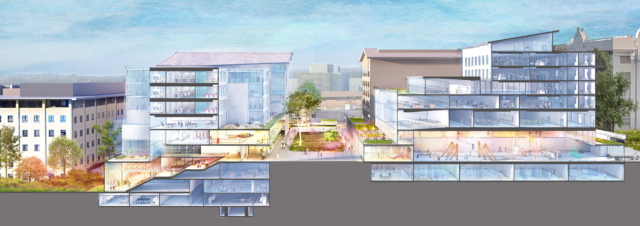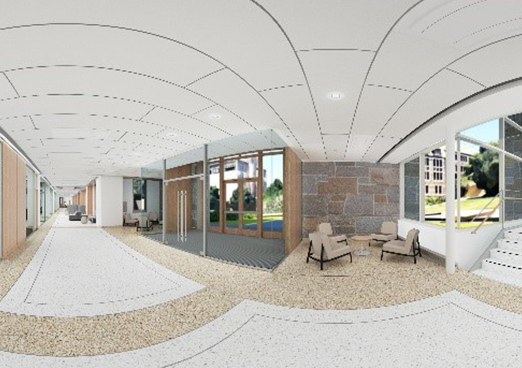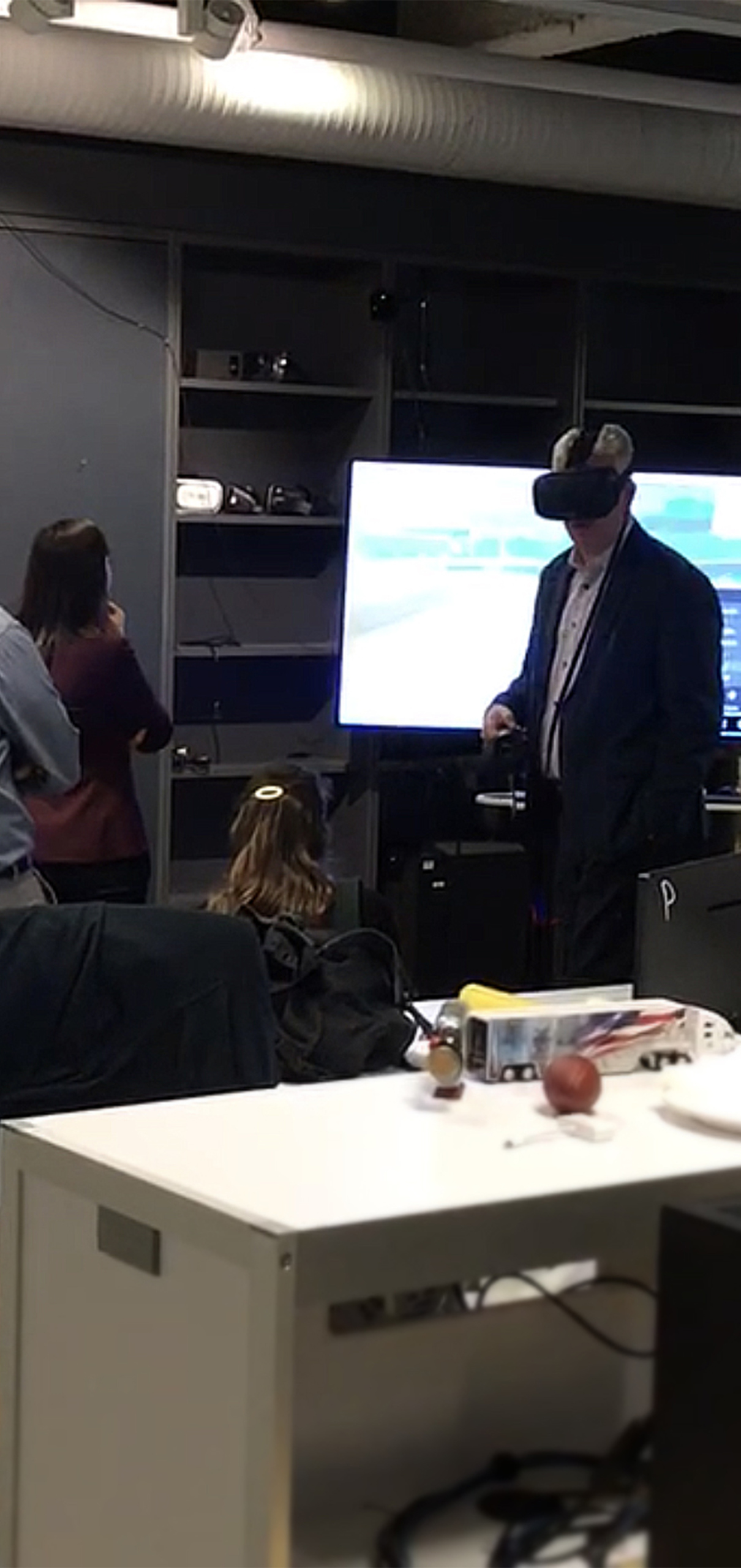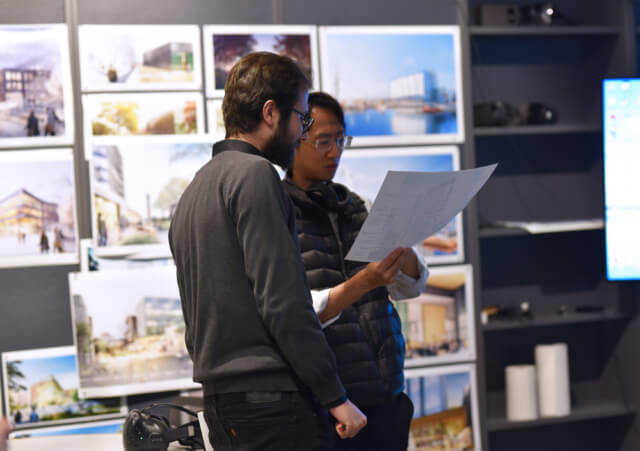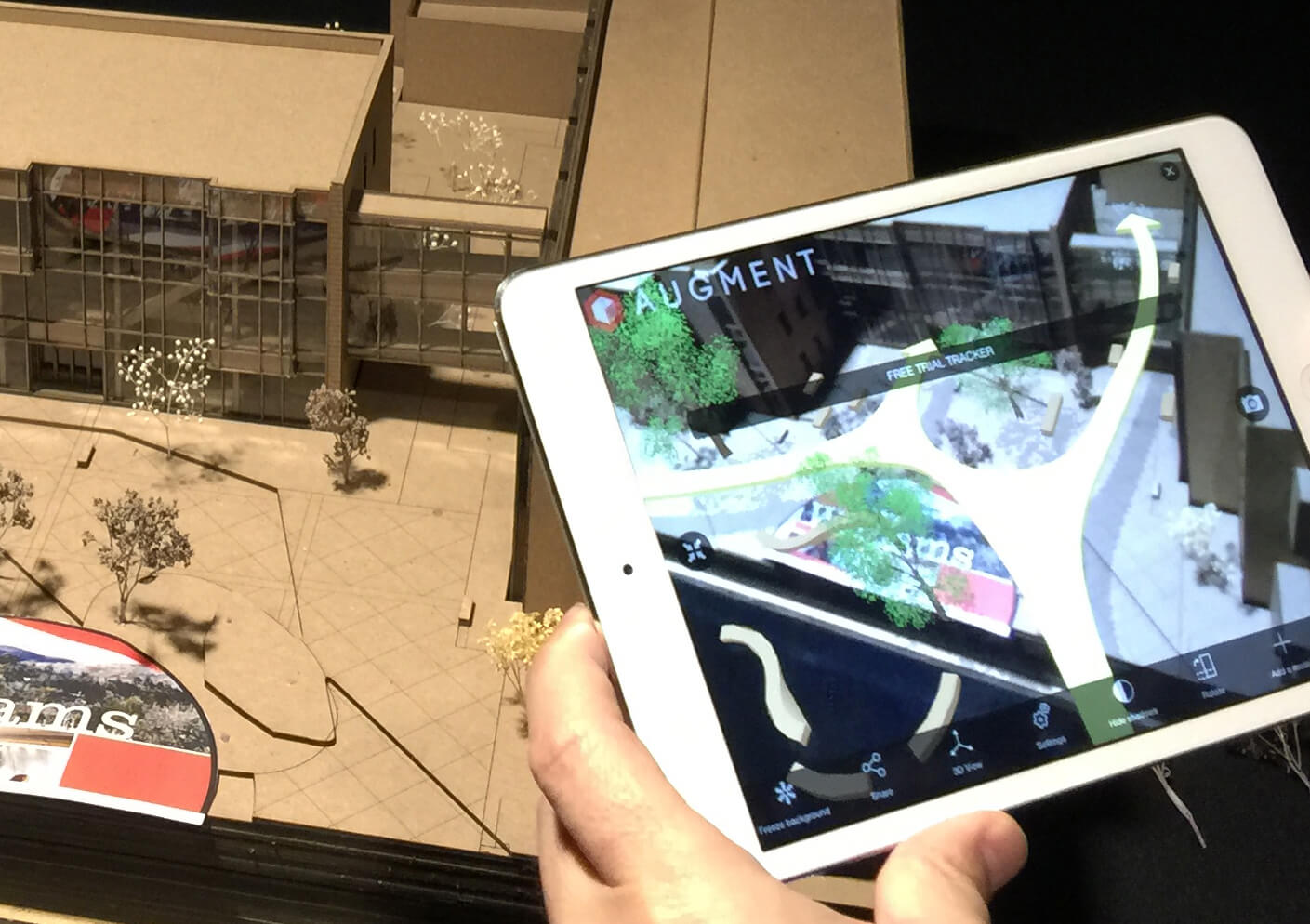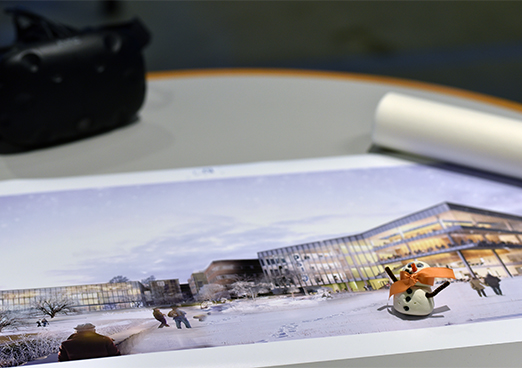
Computation at PAYETTE encompasses a variety of digital iterative solutions used to facilitate our creative design processes. Our complex building typologies often require technical design thinking only achievable through the use of sophisticated parametric workflows, custom scripting and agent-based simulations. Many of PAYETTE’s designers have strong parametric skills suited for design iteration and generation through the use of the visual scripting plugins Grasshopper and Dynamo. This expertise allows parametric design to be carried out by the individual project teams, supported by a small group of dedicated computational specialists who also create digital tools for the office.
PARAMETRIC DESIGN
Team members with limited Grasshopper knowledge often gain experience with the tools for a variety of design and automation tasks. One example is the Northeastern EXP façade fins which were developed entirely in Grasshopper. This was implemented as a collaborative script between a small group of designers to enable them to iteratively update the façade design over the course of the project. Another example of parametric design workflow was the design of the UConn façade panelization in Dynamo. For this project, thousands of custom panel patterns were mapped to the facade using a sophisticated culling mask developed by the team.
Programming and Scripting
These programs include workflows between Rhino and 3dsMax, Grasshopper and Unity, and exports to several JSON file formats. The group has also created several complex Grasshopper scripts that are used by the designers to automate curtainwall designs, allowing them to automatically apply typical rainscreen systems to facilitate façade design. Often a specific project challenge will prompt the development of a new tool that can be later generalized for use on future projects. The ability to quickly automate repetitive tasks increases efficiency during the design process.
SIMULATION and ANALYSIS
The results of our simulation and analysis range from creating acoustic visualizations for understanding room decibel levels, to internally designed algorithms to solve complex floor plan layouts with agent-based simulation. We have developed a library of tools that allow us to simulate various design situations to better understand how a building could be used and experienced in the future. By inputting the required data—flow rate, FTEs, wait times—the model can simulate flow and identify bottlenecks. Recently, PAYETTE used this service to test the theoretical operational model for patient entry/registration at a new healthcare facility.ss.










